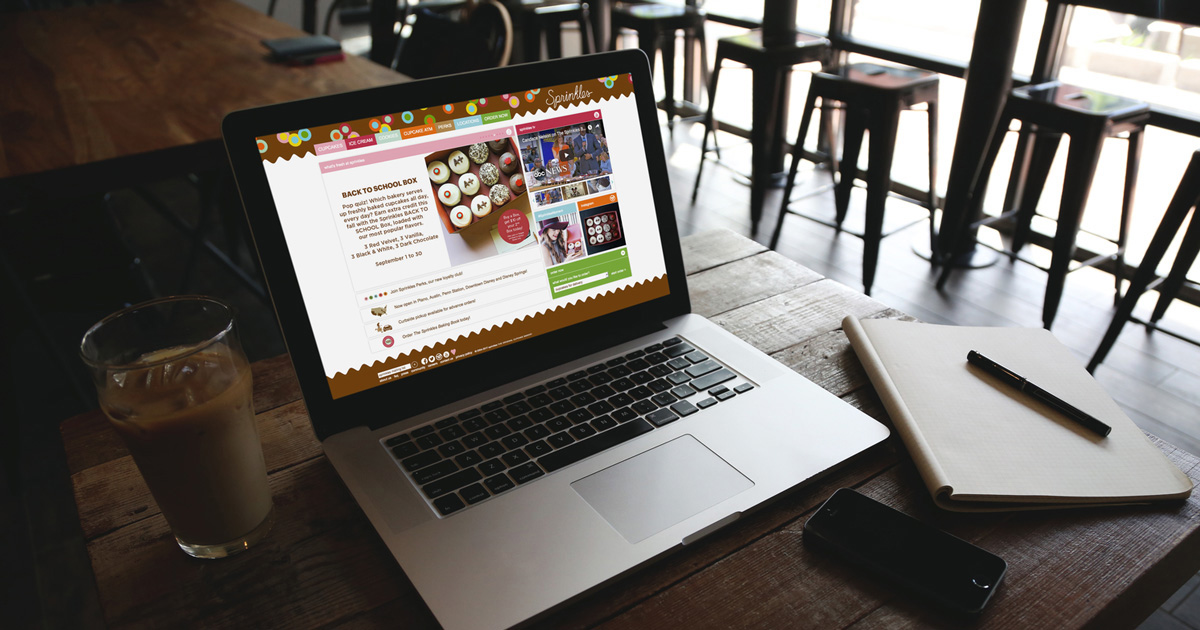We’ve all become accustomed to websites displaying a logo in the top left corner of every page. So, it’s easy to understand why an eager organization might consider bucking the norm in an effort to create a more unique visual experience for its website users. However, before heading in that direction, it’s important to know exactly what you’re sacrificing.
First, let’s step back and remind ourselves why we we’re placing a logo in the site’s header in the first place:
The role of the logo in your header
Including your logo in your header (and linking it to your homepage) fulfills several important needs for a good web user experience:
- Provides an orientation landmark. Displaying the company logo on every page lets visitors quickly know where they are, and which site they’re currently viewing. The web is a big place, and attention spans are usually quite limited, so clearly telling (and reminding) users where they are is essential.
- Reinforces the brand. Repetition breeds recognition – The more often users see a logo, the more likely they are to remember the brand. Improved brand recognition and recall means people are more likely to remember your brand when they’re in need of your services and products. Marketers call this top of mind awareness. Additionally, people are typically more likely to trust a company that they know over one they’ve never heard of.
- Enables easy navigation to the homepage. Website logos should always be clickable elements that link directly to the homepage. This has become an expected experience. It allows users an easy way to ‘start over’ by returning to the homepage, no matter where they are on your site. This type of ‘reset’ is particularly helpful on large sites, where visitors are more likely to become disoriented or burrowed deeply, as well as on sites where users are performing tasks (i.e. completing forms, entering contests, surveys, etc.) and may wish to restart their experience afterwards.
Why the top-left?
Web users expect to see your logo in the top-left. In fact, the top-left placement of logos is so familiar to users that straying from this pattern risks significantly impairing brand recall and the user experience.
Let’s first examine the effect of logo placement on brand recall. A study conducted by the Nielson Norman Group, in which left and right-positioned logos were compared, average brand recall for the left logo position was 39%, vs 21% for the right position. That’s an 89% increase in brand recall for the sites with the left-positioned logo.
Users are 89% more likely to remember logos shown in the traditional top-left position than logos placed on the right.Website Logo Placement for Maximum Brand Recall, Nielson Norman Group
Logo placement can also have a significant effect on website navigation and the resulting user experience.
Positioning the logo in either the center or right of your site’s header may make it more difficult for your visitors to return to your homepage. Or at least, it may make it less likely that they will.
For example, a 2016 UX study conducted by the Nielson Norman Group compared 14 different fashion-retail sites: 8 with centered logos and 6 with left-aligned logos. All of the logos were clickable links to the homepage, and none of the sites offered a text link to the homepage. The study found that, on sites with left logos, users were significantly more likely to navigate home in a single click than on sites with a centered logo. Users were 6 times more likely to fail to navigate to the homepage in a single click when the logo was positioned in the center.
Getting back to the homepage is about 6 times harder when the logo is placed in the center of a page compared to when it’s in the top left corner.Centered Logos Hurt Website Navigation, Nielson Norman Group
This kind of navigational difficulty is likely due, in large part, to the pairing of two expected conditions; 1. Users expect to see logos placed on the left in the header, and 2. Header logos are expected to serve as a link back to home. As soon as the first part of the this expectation is not met (i.e. the user doesn’t see your logo in the upper left) the user begins to call into question their other expectations, and they’re left to search elsewhere for the link to home. Or perhaps just leave.
Difficult navigation has an obvious impact on your ability to reach your audience with your messaging. Additionally, it also leads to frustration among your visitors, and have a negative effect on their perception of your brand.
It should be noted that some exception can be made for small screens, where centered or right-aligned logos appear frequently these days in conjunction with mobile menu icons. In these instances, studies show that the effects of these logo placements are far less significant.


